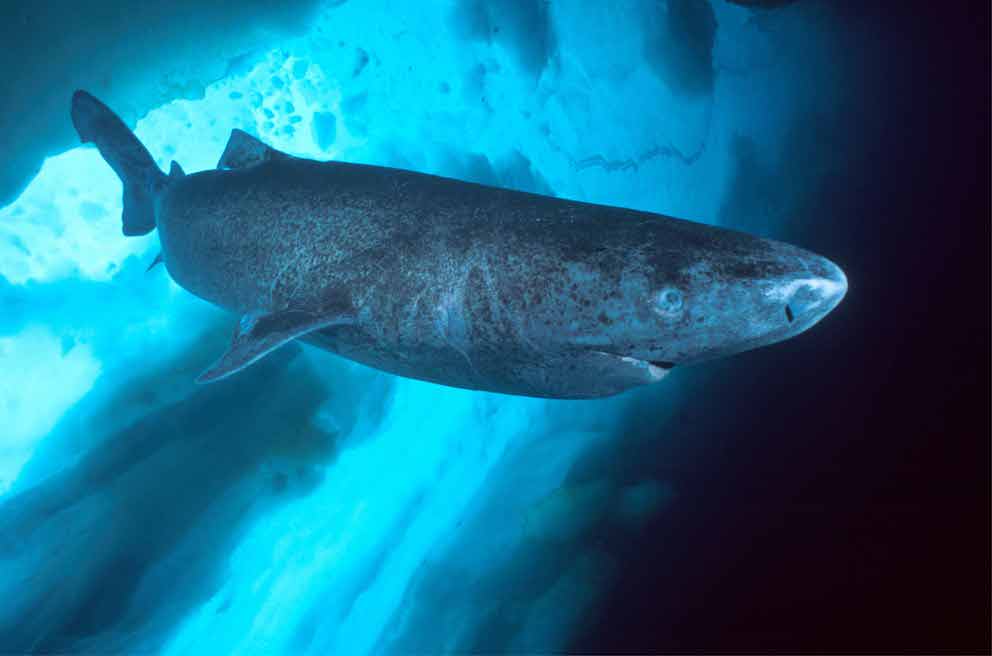The Greenland shark has become the oldest known backboned animal researchers say, “weighing in” at around 400 years old.
Scientists used radiocarbon dating to discover the age of 28 of the animals, and estimated that one female was about 400 years old The team found that the sharks grow at just 1cm a year, and reach sexual maturity at about the age of 150. The previously known longest living vertebrate, the bowhead whale can live for around 211 years, which is less than the lower new estimate of a Greenland shark’s lifespan.
“The Greenland shark’s eye lens is composed of a specialised material – and it contains proteins that are metabolically inert,” explained Julius Neilson of Copenhagen University.
“Which means after the proteins have been synthesised in the body, they are not renewed any more. Because radiocarbon dating does not produce exact dates, they believe that she could have been as “young” as 272 or as old as 512. It means she was born between the years of 1501 and 1744, but her most likely date of birth was in the 17th century.”
Because of their extreme longevity, Greenland sharks may still be recovering from being over-fished before WW2.
The sharks’ livers were once used for machine oil, and they were killed in great numbers before a synthetic alternative was found and the demand fell.
Greenland sharks were once thought to be deep dwelling, slow moving scavengers. But more recently scientists found they can kill and eat seals and they’ve been discovered in shallow waters of Svalbard and around Sable Island in the North Atlantic, where they are thought to use low visibility, together with a highly developed sense of smell, to attack their unsuspecting prey. They have a unique jaw with surprisingly small teeth for an apex predator.

Greenland sharks have been spotted circling under holes in the ice cap, possibly waiting for a seal. Until recently it was thought they could not catch such prey
Those on the upper jaw grip their prey while the lower set are positioned like a reciprocating saw. Their unprepossessing appearance is often remarked and they have been likened to a cigar with fins.




